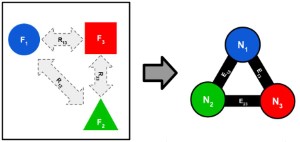
Concept Learning Based on Human Interaction and Explainable AI
Proc. SPIE 11735, Pattern Recognition and Tracking XXXII, 2021

Abstract
In this article, we explore the role and usefulness of parts-based spatial concept learning about complex scenes. Specifically, we consider the process of teaching a spatially attributed graph how to utilize parts-detectors and relative positions as attributes in order to learn concepts and to produce human oriented explanations. First, we endow the graph with parts detectors and relative positions to determine the possible range of attributes that will limit the types of concepts that are learned. Next, we enable the graph to learn concepts in the context of recognizing structured objects in imagery and the spatial relations between these objects. As the graph is learning concepts, we allow human operators to give feedback on attribute knowledge, creating a system that can augment expert knowledge for any similar task. Effectively, we show how to perform online concept learning of a spatially attributed graph. This route was chosen due to the vast representational capabilities of attributed graphs, and the low-data requirement of online learning. Finally, we explore how well this method lends itself to human augmentation, leveraging human expertise to perform otherwise difficult tasks for a machine. Our experiments shed light on the usefulness of spatially attributed graphs utilizing online concept learning, and shows the way forward for more explainable image reasoning machines.
Media